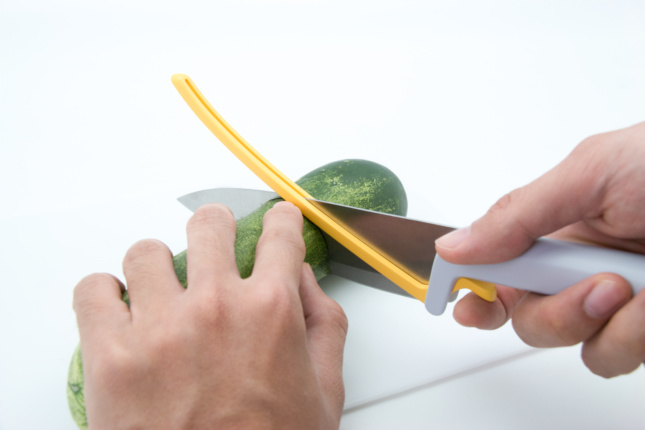Kevin Chiam designed Folks, a range of kitchen tools for the blind based on familiar cooking instruments, sensory feedback, and tactile cues. Aptly named, the collection aims to allow those without sight to prepare food “just like common folks.”
As a student of the industrial design program at National University of Singapore, Chiam researched how blind people prepared food and noticed how they learned to cope with uncertainties like spills or knife cuts. Witnessing blind cooks—from household to a master chief—he realized that their actions were guided by spatial judgements formed by sensory references, or put simply, information they can readily gather from the environment.
He explained, “I was thus surprised to find blind MasterChef Christine Ha working the stove and knife like a seasoned hand. Later, I come to understand that she could accomplish this only through rigorous practice. I was curious how we can imbue these individuals with confidence so that they can overcome physical and mental barriers to attempt and appreciate cooking.”
With all this in mind, he designed a range of prototype cookware to make food preparation more safe and convenient: a knife, a cutting board, a stove ring, a pot lid, and a teaspoon. Chiam devised a set of tactile cues, feedback from each tool that helps to prompt and inform the user during the cooking process and reduce the risk of injury. He also implemented bold visual contrasts (yellow safety guides flush against the grey body of the utensil) to differentiate and accentuate the form of the tool and how it is used.
As Chiam noted, “While the intention of Folks is to help the blind prepare food safely with convenience, confidence and dignity, the approach can potentially be extended to serve people with parallel needs, such as seniors with poor or low vision. The provision of tactile cues and feedback helps to prompt and inform them during the cooking process, reducing the risks of injuries and helping them gain confidence in the rituals.”
Folks is designed to assist workflow and enhance the kitchen with a system of tools that provide necessary tactile cues in the preparation and cooking process. More importantly, they are affordable, help the user to become self-sufficient, and are not high maintenance like battery-operated counterparts.
Chiam will continue to work on developing prototypes with seed funds from NUS Enterprise’s Practicum Awards, aiming to optimize the product range for a small scale production through social organizations like Project Dignity in Singapore. His end goal is to make Folks available to all homes of the blind.
Kevin Chiam’s kitchen tools for the blind will be on view in the Global Graduation Show at Dubai Design Week from November 13th to 18th.
